Never do today what you can pay your kids to do tomorrow. It is sage advice that has been passed down for millenia. Last week, I employed it.
I had been running around the yard in pursuit of white butterflies, the ones that lay eggs on the leaves of plants in the brassica family, the cole crops: cabbage, broccoli, cauliflower, kale, collards, etc. The eggs of the white butterflies hatch into green caterpillars that feed on the leaves.
They start out tiny, and they eat tiny holes.
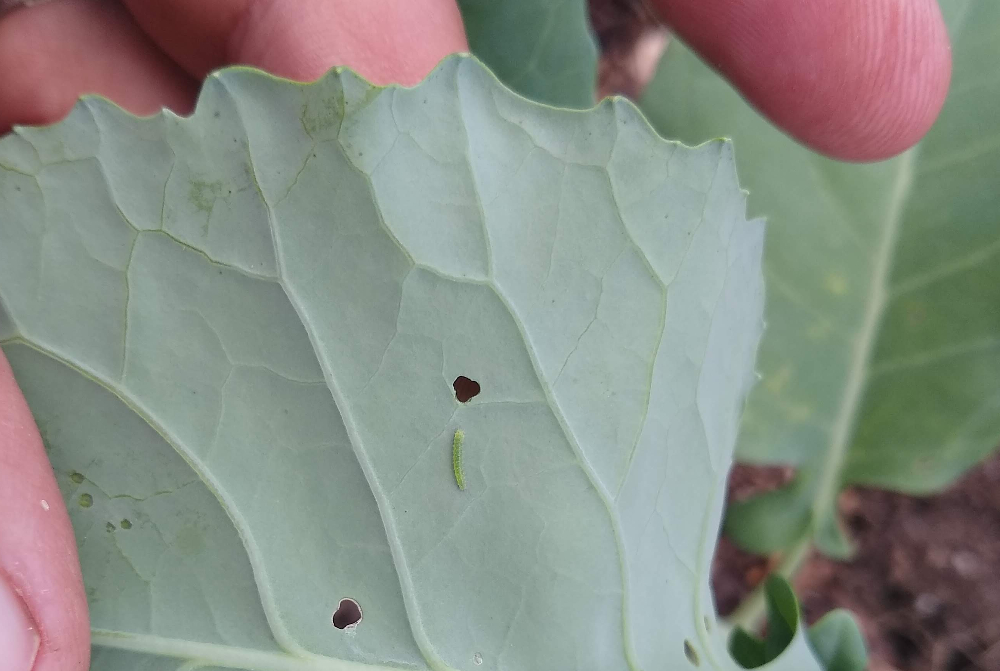
But they grow rapidly and soon eat large holes. On a broccoli seedling, the caterpillar can eat so much of the leaves that the plant dies. On a larger cabbage plant, the caterpillar likes to eat into the head, leaving scatterings of green poop behind its tunnel and ruining the harvest.
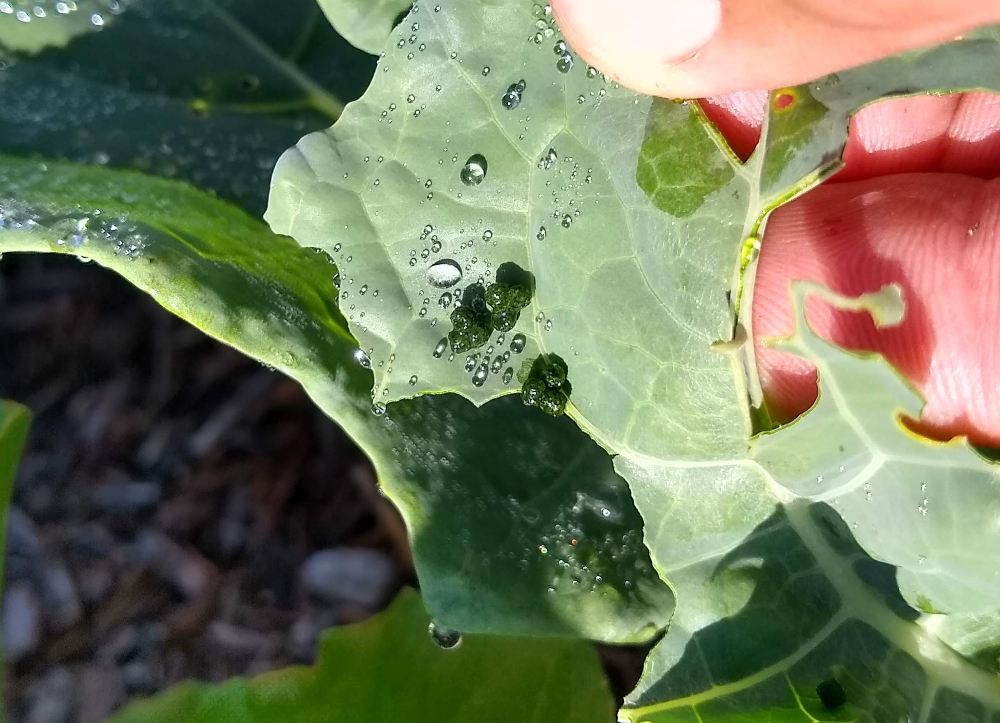
The name of this caterpillar is Pieris rapae, and it is sometimes called “imported cabbageworm” or just “cabbage worm.”
There is a similar caterpillar that feeds on cole crops called the cabbage looper, but it has white stripes on its back and moves like an inch worm. It also does not turn into a pretty butterfly but rather a drab-colored moth. The cabbage looper damages your cole crops all the same, however, and can be dealt with using most of the same techniques as for the cabbage worm.
Techniques
I use a three-pronged approach to minimizing the damage that can be caused by cabbage worms (and loopers). First, I keep an eye out for holes in leaves. If I spot any, then I look around the plant to find the caterpillar eating the holes. It can be found anywhere on a leaf: on the top or bottom, near the rib or edge, even in the rosette. They blend in very well.

I usually pick them off and throw them.
Second, I look for eggs. This is especially good to do for seedlings because they can’t tolerate much damage so it’s best to eliminate the eggs before they hatch.
The eggs are whitish or light yellow, laid in singles, and they look like tiny cones stuck onto the leaves. They can be on the top or bottom of leaves. Just wipe them off.

The third prong yields even more benefits than wiping off eggs. The third prong is catching butterflies. Catching one butterfly is worth wiping off dozens of eggs because it prevents the laying of dozens more eggs.
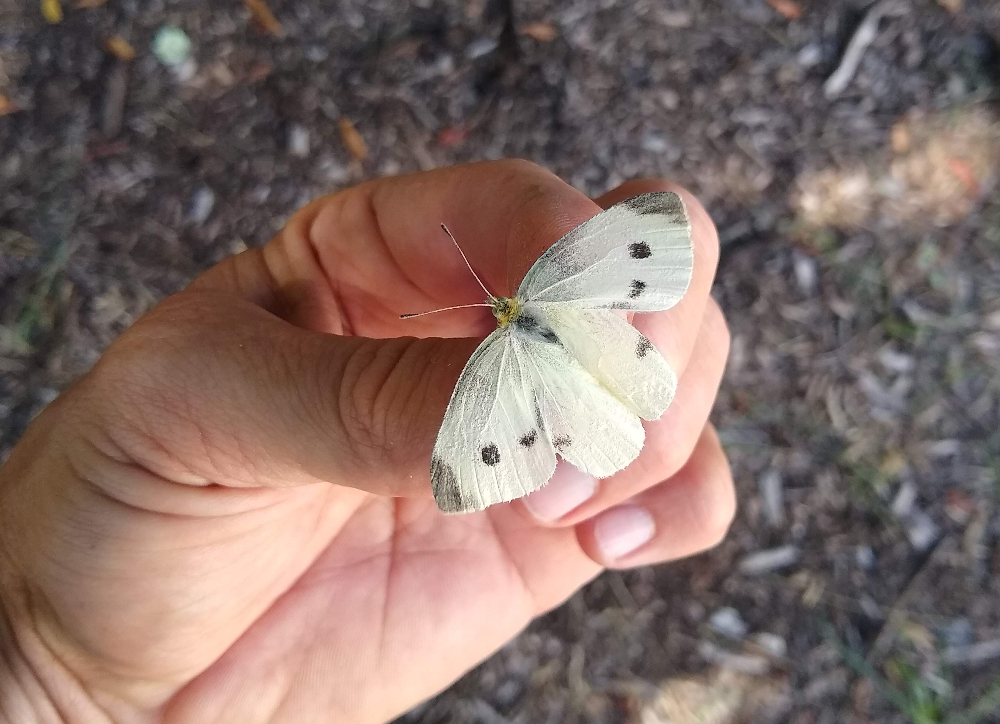
If only the butterflies were easier to catch . . .
Pay the kids
Last week, I had clapped a few butterflies in middair, and that felt satisfying, but it took much time and many misses. One of my sons has a net that he uses to catch bees, I recalled. We refrigerate the bees to put them to sleep so we can look at them closely. They slowly wake back up and fly off unharmed. I grabbed his net and caught a few butterflies more easily. That was smart, but my next idea was smarter:
“Miles, I’ll give you a dollar for each white butterfly you can catch!”
“Why do you want to catch butterflies?” he asked.
I told him that I only wanted to catch the white ones, I showed him the eggs and caterpillars that they come from, and I showed him the holes they ate in our cole crops. He then understood why we had to reduce their numbers. He was off and running, and he came back with one in the net shortly.
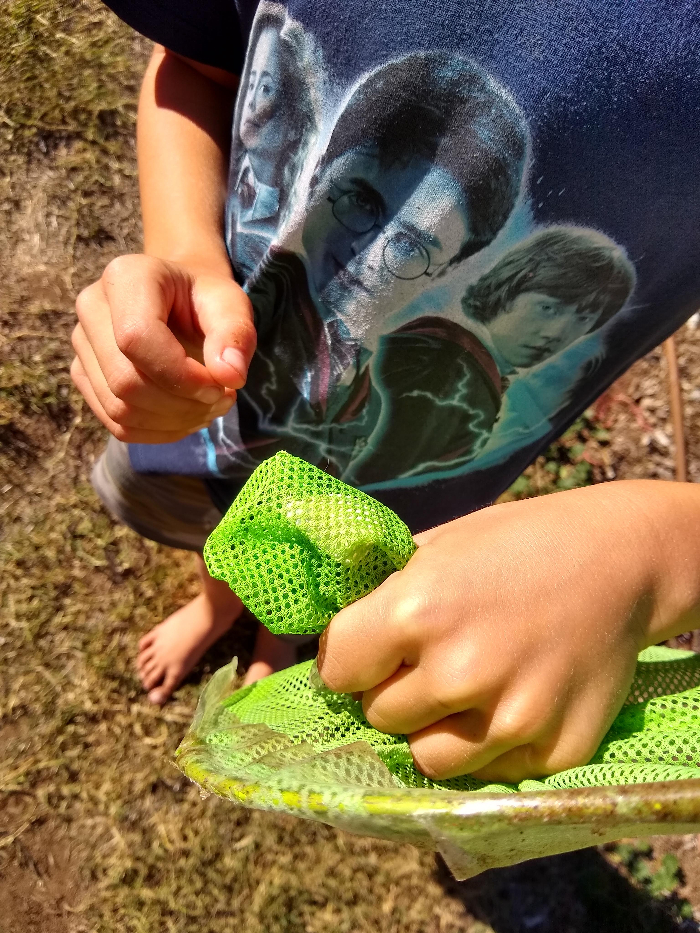
Then I heard him recruiting his younger sister as a scout.
“You helping Miles find butterflies?” I asked her.
“Yeah, he said he’d give me Pokemon.”
“Oh, nice.”
“A card that does 60 damage!”
“Nice!”
My wife thinks I am overpaying them, but I bet she won’t be complaining when our cabbage heads are clean and whole.
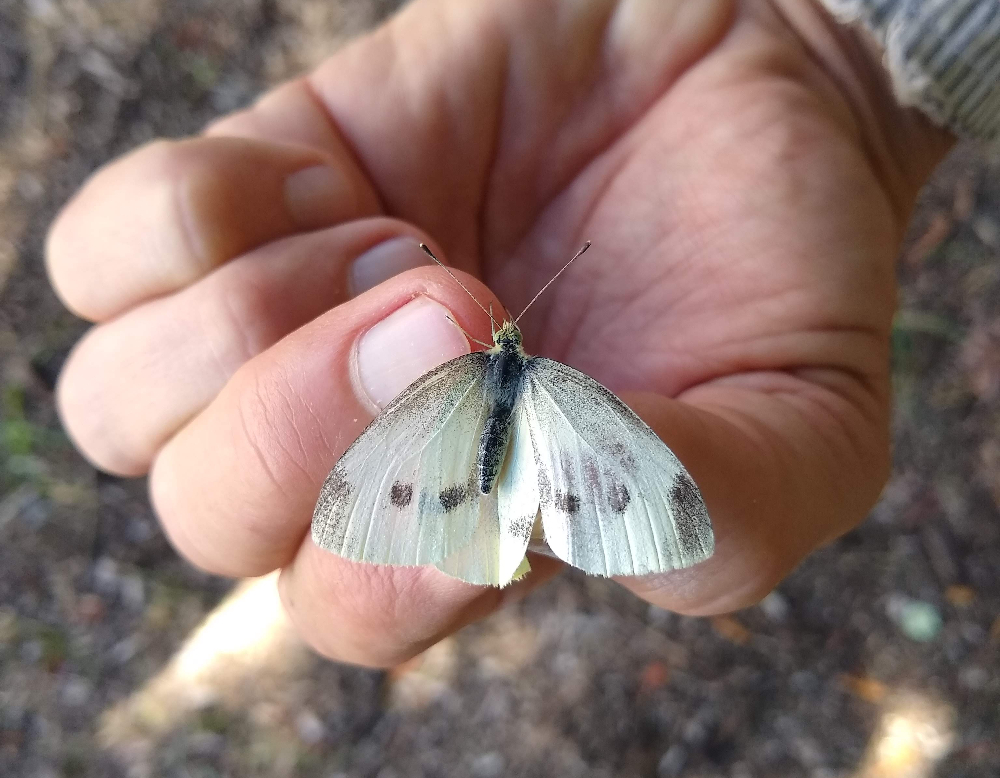
Bt
An alternative approach is spraying with a pesticide that contains the bacterium called Bacillus thuringiensis, or Bt for short. Monterey makes this Bt spray. I’ve never tried this, but I read that it is effective at killing the cabbage worms.
However, it has downsides. One is that it kills all other caterpillars too. I don’t want to kill all caterpillars, just the ones that are eating our food.
Row covers
You can also prevent the butterflies from accessing your plants with a row cover.
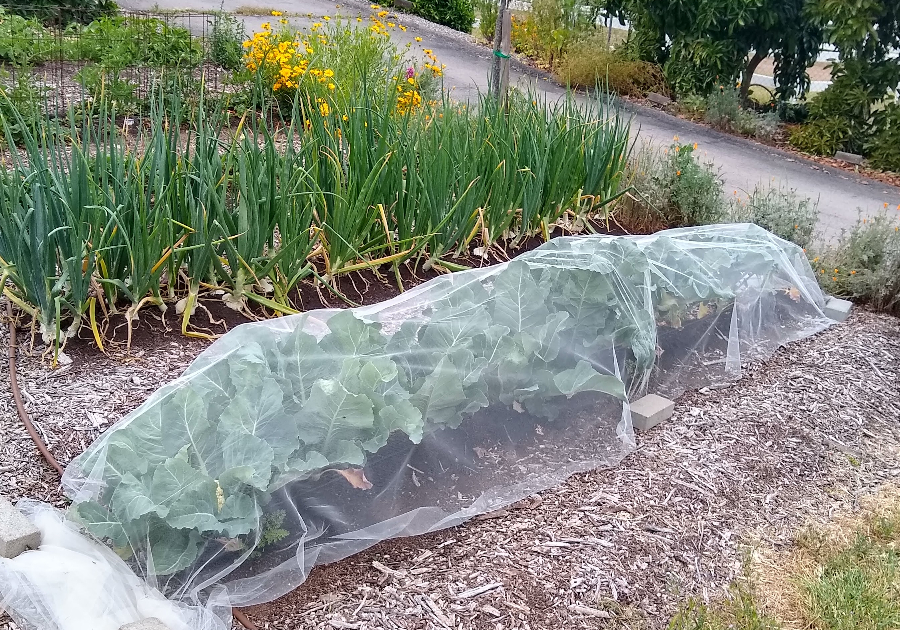
“Dad, I caught another one!” Miles shouted through the window just now as I was writing this post. Never do today what you can pay your kids to do tomorrow.
Thank you for your support of my Yard Posts.
All of my Yard Posts are listed HERE

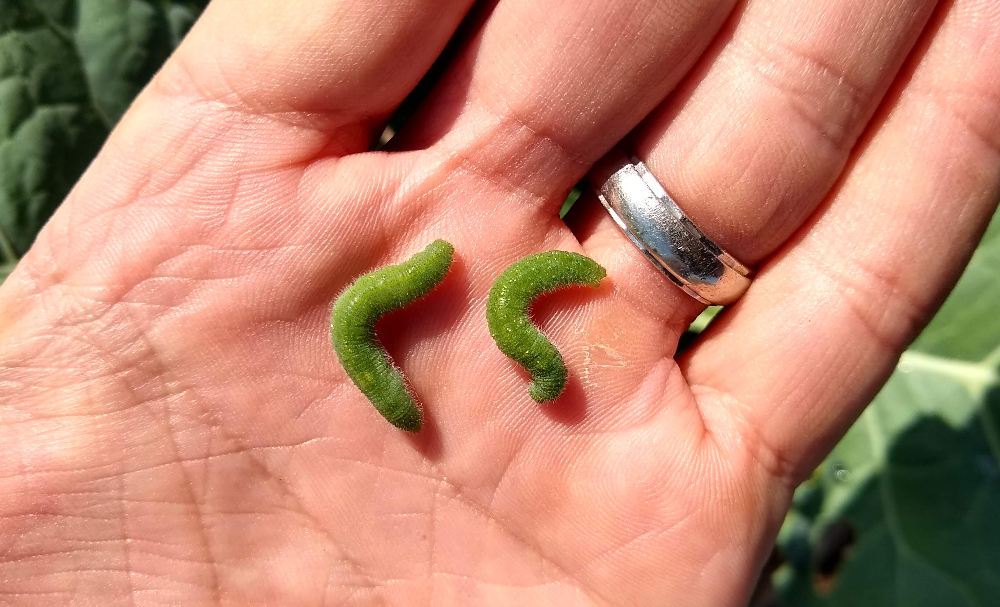


This week in Fullerton I saw what I thought was large bird poop on a citrus leaf. Turns out it was an orange dog caterpillar which turns into a swallowtail. I have photos I would love to post but can’t figure out how. It seemed to have a face on it. Rest assured I left it alone, hopes it makes it!
I had several on some young citrus trees last year. They did some pretty heavy damage. I am removing them this year.
It’s late December and I want to start brassicas plants: cabbage, cauliflower, arugula, broccoli.
Any advice on direct sowing seeds in late December vs. starting plants indoors or greenhouse? I direct sowed some a few weeks ago with zero results. Is it a good idea to pre-soak seeds?
I’m experimenting with rice hull mulch this year, removing wood chips to reduce pill bugs, and will use a floating row cover to protect against caterpillars and grasshoppers.
Hi Peggy,
I’m about to sow some brassicas too. I will start them in trays/cells rather than sow in the ground because I have too many pill bugs and earwigs around that will munch on the seedlings. I also noticed that white-crowned sparrows had arrived last week, and they can cause damage too.
I don’t pre-soak brassica seeds. They germinate within a week even at fairly cool temperatures.
Hi Greg!
Love the kids catching the culprit butterflies! Too late here in Morro Bay CA the ca, the green caterpillars seem to have taken over my kale. I’m growing on a tower garden and so far they aren’t attacking my other leafy greens. Any suggestions on how to effectively remove the little boogers? I’ve been removing them as I find them and have even discarded lots of infected leaves. I even soaked them in a solution of soapy water beforehand. Is it too late to try neem oil? How do you make sure you get all the caterpillars off when you harvest? I really appreciate any advice.
Hi Kelly,
I’ve never tried neem oil. I just pick off whatever caterpillars I see. If I inadvertently eat a few tiny ones, that doesn’t bother me.
One thing I’m trying currently is going for a few months with no host plants in my yard, so no brassicas of any kind. I’m hoping this will reduce the population of the pest enough to lighten my management duties when I plant new brassicas in September. We’ll see.
I tried neem oil on broccoli for white butterflies and their youngsters. Didn’t work. Once broccoli gets big enough, it’s not an issue. The bees loved broccoli flowers so much I stopped harvesting the heads and let them bloom! I like watching swarms of happy bees more than eating broccoli.